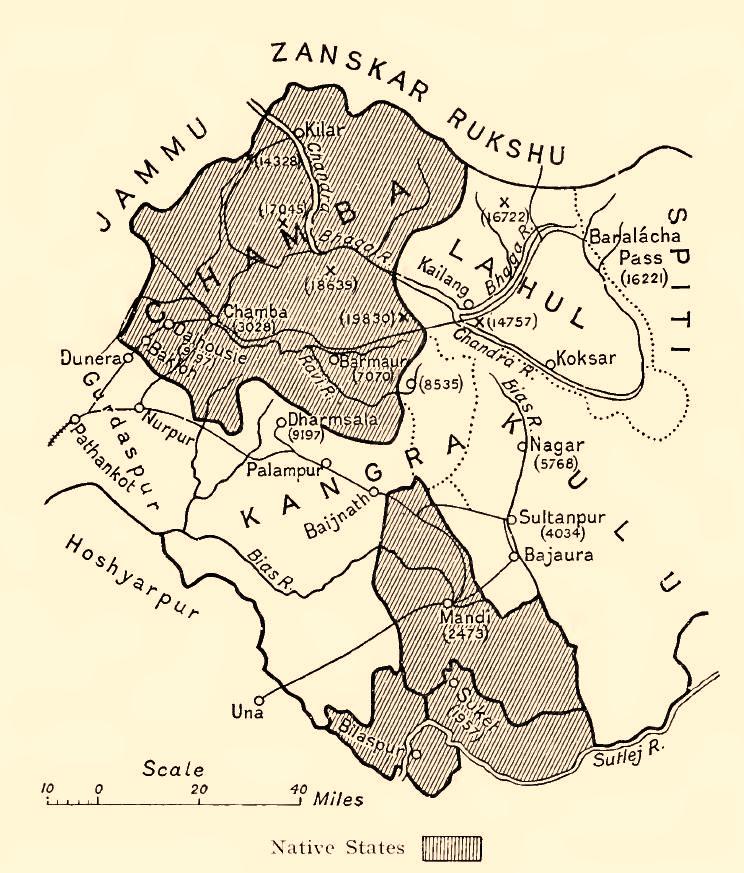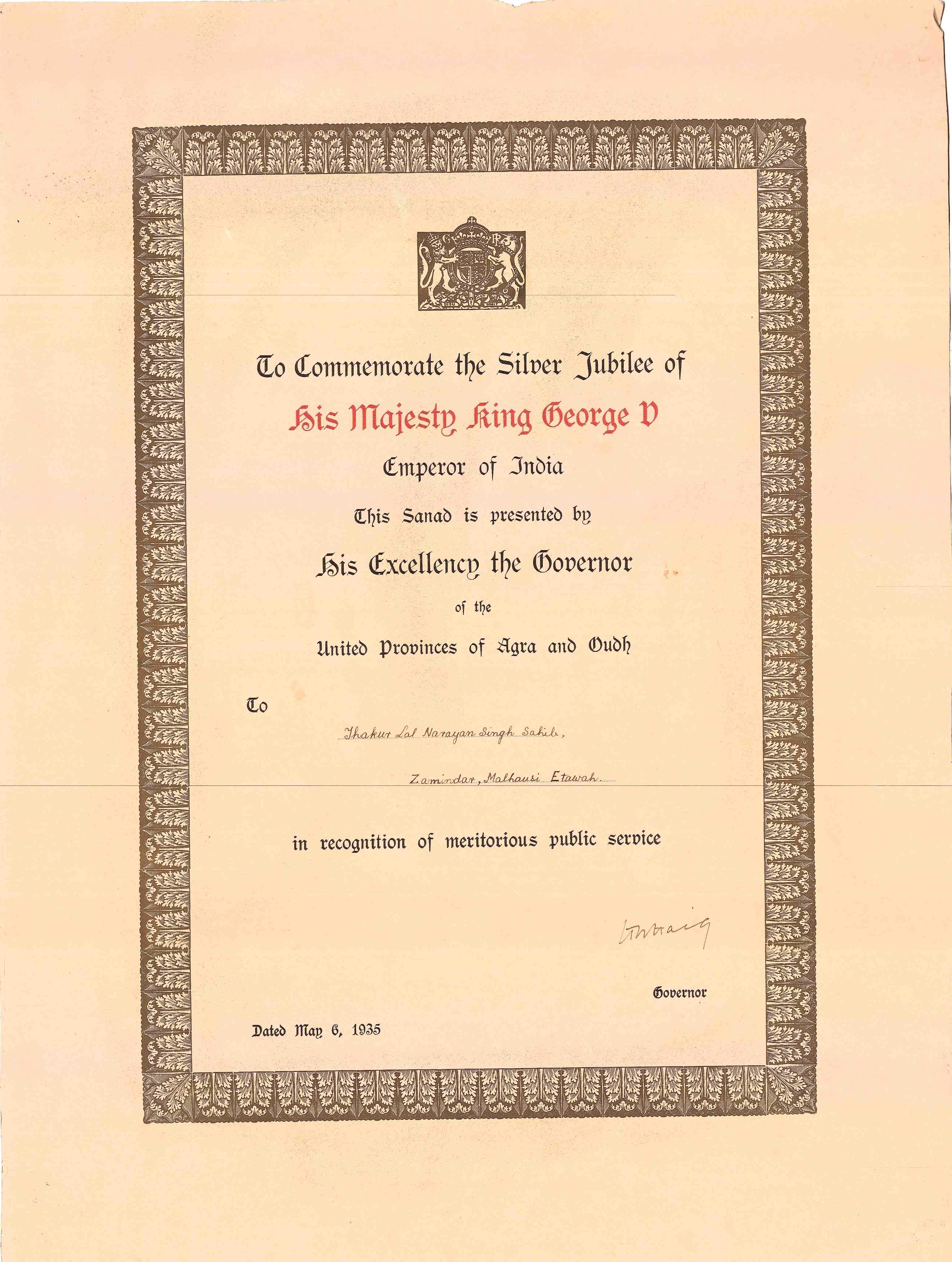|
Baghat
Baghat was a princely state of the British Raj, located in modern-day Himachal Pradesh. It constituted one of the Simla Hill States. It consisted of three separate parts which were almost entirely surrounded by the larger Patiala territory. The largest part comprised approximately , extending eastward from Solan. It incorporated Takroli, Bhocháli and part of the Básál parganas. The two smaller parts comprised about and respectively, and formed the remainder of the Básál pargana.Gazetteer, p. 3. The first capital of the state was Jaunaji located 6 miles from solan, 2nd Bhoch, in the pargana of Bhocháli. It was shifted in 1875 to Solan, which had a station on the Kálka–Simla railway. Etymology The name "Baghat" is commonly said to be derived from ''bau'' or ''bhau'', said to be a hill-tribe word meaning many, and ''ghát'', the word for a pass. Another theory suggests that it is instead a corruption of ''bára ghát'', meaning twelve ''ghát''s. This is owed to the ... [...More Info...] [...Related Items...] OR: [Wikipedia] [Google] [Baidu] |
Solan
Solan is a city in the Indian state of Himachal Pradesh and the district headquarters of Solan district. It is located south of the state capital, Shimla. Solan has an average elevation of . The city is situated between Chandigarh (joint capital of Punjab (India), Punjab and Haryana) and Shimla (state capital) on the National Highway 5 (India), Kalka-Shimla National Highway-5. The narrow-gauge Kalka-Shimla railway passes through Solan. Located on the Punjab-Himachal Border, Solan is nestled in the Sivalik Hills, Shivalik hills of the Himalayas. Solan was originally the capital of the princely state, Baghat.Capital of Bhagat state A defining feature of Solan, is its ancient temples and Monastery, monasteries. The Shoolini Mata Temple and Jatoli Shiv Temple are popular attractions for tourists. One of the most famous monaster ... [...More Info...] [...Related Items...] OR: [Wikipedia] [Google] [Baidu] |
Simla Hill States
The Hill States of India were princely states lying in the northern border regions of the British Indian Empire. The historic terms ''Punjab Hills'' and ''Pahari Hills'' were used to describe the foothills of the Western Himalayan-range prior to the independence of India in 1947. History Punjab Hills Prior to the late 1940s, the region that is now classified as Jammu and Himachal Pradesh was termed the "Punjab Hills". The Punjab Hills are around 483 kilometres (300 miles) long and 161 kilometres (100 miles) wide. It consisted of a range of foot-hills, known as the Shivalik Range, meeting the Punjab Plains. The hills of the region are stony and rough. The term "Punjab Hills" is now only generally used in the present-era to describe painting styles produced in the courtly settings of Mankot, Guler, Kangra, Kulu, Mandi and Basohli states. The Punjab Hills are not to be confused with the Punjab Plains (i.e. the Punjab proper, being the plains-region with five rivers running ... [...More Info...] [...Related Items...] OR: [Wikipedia] [Google] [Baidu] |
Kahlur
Bilaspur State or Kahlur State, sometimes Kahloor Riyasat, was a kingdom (697–1849) and later princely state (1849–1948) in the Punjab Province ruled by a separate branch of Chandravanshi Chandel rajput dynasty. Raja Bir Chand 697–730 was the founder of the state but it was named Kahlur only after the Construction of Kahlur Fort by Raja Kahal Chand around 890–930CE and Raja Anand Chand the 44th Raja was the last ruler. The state was earlier known as Kahlur Riyasat and was later renamed Bilaspur. It covered an area of , on the name of Sage Bias (from Biaspur later became Bilaspur) and had a population of 100,994 according to the 1931 Census of India. The last ruler of Bilaspur State acceded to the Indian Union on 12 October 1948. Bilaspur State remained Bilaspur Province in independent India until 1950 when the province was briefly renamed "Bilaspur State" before it was merged with Himachal Pradesh state as a district in 1954. In the pre-partitioned Punjab, t ... [...More Info...] [...Related Items...] OR: [Wikipedia] [Google] [Baidu] |
British India
The provinces of India, earlier presidencies of British India and still earlier, presidency towns, were the administrative divisions of British governance in South Asia. Collectively, they have been called British India. In one form or another, they existed between 1612 and 1947, conventionally divided into three historical periods: *Between 1612 and 1757, the East India Company set up "factories" (trading posts) in several locations, mostly in coastal India, with the consent of the Mughal emperors, Maratha Empire or local rulers. Its rivals were the merchant trading companies of Portugal, Denmark, the Netherlands, and France. By the mid-18th century three ''Presidency towns'': Madras, Bombay and Calcutta, had grown in size. *During the period of Company rule in India, 1757–1858, the Company gradually acquired sovereignty over large parts of India, now called "Presidencies". However, it also increasingly came under British government oversight, in effect sharing sovereig ... [...More Info...] [...Related Items...] OR: [Wikipedia] [Google] [Baidu] |
Minority Reign
The terms minority reign and royal minority refer to the period of a sovereign's rule when he or she is legally a minor. Minority reigns are of their nature times when politicians and advisors can be especially competitive. Some scholars claim that, in Britain, primogeniture, the growth of conciliar government, and the emergence of the Parliament as a representative and administrative force all occurred within the context of the minority reigns. Minority reigns also characterized a period in the Roman Empire from 367 to 455, the years that preceded the reign of Valentinian III, who also became emperor at the age of six. The succession of child-turned-adult emperors led to the so-called infantilization of the imperial office, which had taken hold during the long reign of Honorius, Valentinian's predecessor. Here, the imperial office operated within a severely curtailed system compared to its authority a century prior. Authority Commonly, a regent is appointed if a sovereign is a ... [...More Info...] [...Related Items...] OR: [Wikipedia] [Google] [Baidu] |
Rana (title)
Rana (IAST: ''Rāṇā'', ) is an historical royal title from the Indian subcontinent, where it is today used as a hereditary name. "Rana" was formerly used as a title of martial sovereignty by Rajput kings in India. The term derives from the Sanskrit title "Rāṇaka". Rani is the title for the wife of a rana or a female monarch. It also applies to the wife of a raja. Compound titles include ''rana sahib'', ''ranaji'', ''raj rana,'' ''rana bahadur'', and ''maharana''. Usage in the Indian subcontinent "Rana" was formerly used as a title of martial sovereignty by Rajput kings in India. Sisodia rulers of Mewar used the title of Mahārāṇā (महाराणा) extensively in their royal charters. Today, members of some Rajput clans in Indian subcontinent use it as a hereditary title. In Pakistan, mostly Muslims—but also some Hindus in Sindh (present-day Pakistan)—use it as a hereditary title. Amarkot, a state in Sindh, has a Hindu Thakur Sodha Rajput ruler who ... [...More Info...] [...Related Items...] OR: [Wikipedia] [Google] [Baidu] |
Sanad (deed)
A deed is a legal document that is signed and delivered, especially concerning the ownership of property or legal rights. Specifically, in common law, a deed is any legal instrument in writing which passes, affirms or confirms an interest, right, or property and that is signed, attested, delivered, and in some jurisdiction (area), jurisdictions, seal (emblem), sealed. It is commonly associated with transferring (conveyancing) title (property), title to property. The deed has a greater presumption of validity and is less Rebuttable presumption, rebuttable than an instrument signed by the party to the deed. A deed can be unilateral or bilateral. Deeds include conveyancing, conveyances, Contract, commissions, licenses, patents, diplomas, and conditionally power of attorney, powers of attorney if executed as deeds. The deed is the modern descendant of the medieval charter, and delivery is thought to symbolically replace the ancient ceremony of livery of seisin. The traditional phrase ... [...More Info...] [...Related Items...] OR: [Wikipedia] [Google] [Baidu] |
Lord Canning
Charles John Canning, 1st Earl Canning (14 December 1812 – 17 June 1862), also known as the Viscount Canning and Clemency Canning, was a British politician and Governor-General of India during the Indian Rebellion of 1857 and the first Viceroy of India after the transfer of power from the East India Company to the Crown of Queen Victoria in 1858 after the rebellion was crushed. Canning is credited for ensuring that the administration and most departments of the government functioned normally during the rebellion and took major administrative decisions even during the peak of the Rebellion in 1857, including establishing the first three modern Universities in India, the University of Calcutta, University of Madras and University of Bombay based on Wood's despatch. Canning passed the Hindu Widows' Remarriage Act, 1856 which was drafted by his predecessor Lord Dalhousie before the rebellion. He also passed the General Service Enlistment Act of 1856. After the rebell ... [...More Info...] [...Related Items...] OR: [Wikipedia] [Google] [Baidu] |
Political Pensioner
A political pensioner enjoys a pension awarded due to his or political career or significance. UK domestic politicians By the Political Offices Pension Act 1869, pensions were instituted for those who had held political office. For the purposes of the act, political offices were divided into three classes: # those with a yearly salary of not less than £5,000; # those with a salary of less than £5,000 and not less than £2,000; # those with a salary of less than £2,000 and more than £1,000. For service in these offices there may be awarded pensions for life in the following scale: # a first class pension not exceeding £2,000 a year, in respect of not less than four years service or its equivalent, in an office of the first class; # a second class pension not exceeding £1,200, in respect of service of not less than six years or its equivalent, in an office of the second class; # a third class pension not exceeding £800 a year, in respect of service of not less than te ... [...More Info...] [...Related Items...] OR: [Wikipedia] [Google] [Baidu] |
Gurkha War
The Anglo-Nepalese War (1 November 1814 – 4 March 1816), also known as the Gorkha War or Nepal-Company War, was fought between the Gorkhali army of the Kingdom of Nepal (present-day Nepal) and the forces of the British East India Company (EIC). Both sides had ambitious expansion plans for the mountainous north of the Indian subcontinent. The war ended with a British victory and the signing of the Treaty of Sugauli in 1816, which ceded some of the Nepalese-controlled territory to the EIC. The British war effort was led by the EIC against the Kingdom of Gorkha. Most of the Kingdom of Gorkha's war effort was led by the two Thapa families: the Thapa dynasty and the family of Amar Singh Thapa. Background In the mid-eighteenth century, the British East India Company actively traded with Nepal. Viewed as an opulence hub, Nepal supplied the Company with commodities such as rice, butter, oil seeds, timber, dyes, and gold. In 1767, British concerns around this partnership grew when ... [...More Info...] [...Related Items...] OR: [Wikipedia] [Google] [Baidu] |




